- Home
- Equipment Reviews
-
Amplification Digital Integrated Mono Block Preamplifier Phono Solid State Tube Analog Sources Cartridges Tape Tone Arms Turn Tables Digital Sources Digital Disc Players DACs Music Servers Streaming Music Services
-
Accessories Power Conditioners Room Accoustics Racks & Stands Audio Software Other iPod iPod Speakers iPod Headphones iPod Transports Headphones Over Ear On Ear In Ear Headphone Amplifier
-
- Audio News
- Event Reports
- California Audio Show, San Francisco
- Consumer Electronics Show
- T.H.E. Show
- Rocky Mountain Audio Fest
- AXPONA
- Salon Son & Image
- Hi-Fi Show & AV Expo
- High End
- Lone Star Audio Fest
- Capital Audio Fest
- TAVES - Toronto Audio Video Entertainment Show
- AK Fest
- Home Entertainment Show
- New York Audio $ AV Show
- Open House Events
- Spotlight
- Music
- The Columns
- 2024 California Audio Show
Latest Reviews & Audio News
-

PS Audio AirLens and DirectStream DAC Mk2 Review
(July 26, 2024) -

Audio Note UK Meishu Tonmeister 300B integrated amplifier, P3 Tonmeister stereo amplifier, M6 Phono Balanced Preamp Review
(July 12, 2024) -

Douglas Schroeder’s One Year Exploration of Digital Front End Systems
(June 25, 2024) -

Arya Audio Labs RevOpods Anti-Vibration Feet Review
(June 25, 2024) -

Lego Icons Retro Radio Review
(June 14, 2024) -
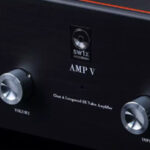
SW1X Audio Design AMP V “Titan” Special directly-heated triode integrated amplifier Review
(June 14, 2024) -
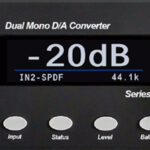
Bricasti Design Model 1 Series II D/A Converter and M5 Network Player Review
(May 24, 2024) -

Star Wars – The Empire Strikes Back – In Concert, May 2, 2024
(May 20, 2024) -
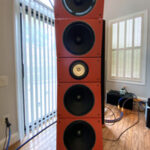
PureAudioProject Quintet15 with Voxativ AC-X field-coil open-baffle loudspeaker system Review
(May 20, 2024) -
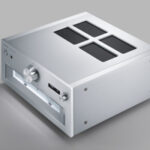
Technics SU-R1000 reference stereo integrated amplifier Review
(May 20, 2024) -
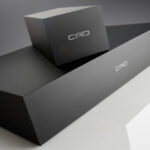
Computer Audio Design GC 1.1 & GC3.1 Ground Control external grounding systems Review
(May 20, 2024) -

Andy Grove of Audio Note UK on IO LTD
(March 23, 2024) -
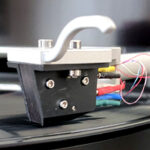
Audio Note UK IO Limited field-coil cartridge system Review
(May 20, 2024) -

EMM Labs MTRX monoblock Input Board Upgrade Review
(March 7, 2024) -

May 2018 Sibelius Violin Concerto concert video via Berliner Philharmoniker Digital Concert Hall app
(February 16, 2024)
-
Categories
-
Amplification Digital Integrated Mono Block Preamplifier Phono Solid State Tube Analog Sources Cartridges Tape Tone Arms Turn Tables Digital Sources Digital Disc Players DACs Music Servers Streaming Music Services
-
Accessories Power Conditioners Room Accoustics Racks & Stands Audio Software Other iPod iPod Speakers iPod Headphones iPod Transports Headphones Over Ear On Ear In Ear Headphone Amplifier
Site Sections
Copyright ©1996-2024 All Rights Reserved.
Popups Powered By : XYZScripts.com

Dagogo welcomes Gordon Pryor as its Commentator.
(Pryor’s first Dagogo article marks the beginning of a series, which introduces the world of artistic creation to Dagogo and its readers. In the present article, Pryor shares his exploit with us , in the first part of “Art! The Perspective in the Creative Process”)
And this, my friends, is one of the many examples of the mind-set, that can suddenly ensconce itself upon one when in the midst of composing a piece. No matter what the medium: it’s the pulse, the pace, the very atmosphere of the moment. One allows the depth of things to surface. Utilize the tools one is presently using and begin, again, and alter, rearrange or don’t, but get on with it. Whatever it takes to make it work.
Personally, I find, in the visual medium, that the questions of “what if” and, “I wonder”, can gnaw too closely at times and be a detriment to the process (even though it is a part of the process), if one is not careful with over doing it. Reading too much into it, so to speak, will twitch you every which way but where you want to go. It can be a very fine line. That is one of the things that can manifest when taking the approach of starting with the ‘blank canvas’ or, having the exact picture in mind before one starts. You make a sketch of some kind initially, whether for out line or main presentation, in your head or upon the working surface. Of course there are a myriad of procedures used just as all individuals do not work in the same way, many if not most can speak of
the similar affects that can go on in the process.
Time is also a major factor inclusive (and even more so responsible), in determining just how far and at what pace working a piece can go. A commissioned piece, for example, usually has a dead line of some kind, set by the initial arrangement of the parties involved. Some individuals set their own pace / dead line (or simply
have one by a default, or acquired or evolved into, etc.), and ‘start, go, and stop’ as needed in time with nothing but getting the piece done. I know a number of people who work this way and not a two of them really do it the same. It is a very individual take on things if one were to watch some of the working procedures.
Suffice to say, it is not necessarily some kind of obtuse, metaphysically, thwarted brain smash-up that occurs for everyone when they are in the mode of composing a piece; however, it is definitely part of the process or effect for some. Of course, it is the results one is usually interested in that are the concern. And like so many other things in life, there is often more than one or two ways to get there.
Once you learn how to listen, you can hear it. Once you learn how to observe, you can see. Once you learn, then you can understand. That is one of the major things about Art. And in the second place, there will always be Art, and aren’t you glad. Glad that if you don’t think anything of it; and can’t figure the need for it, you will never have to concern yourself with being involved, because there are already others doing that anyway. Even involuntarily it takes some in to itself. It is indeed a place…
Perception is not in everyone’s eye.
Just as imagination is not in everyone’s brain…